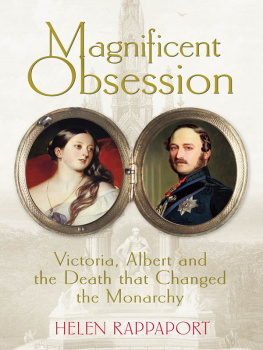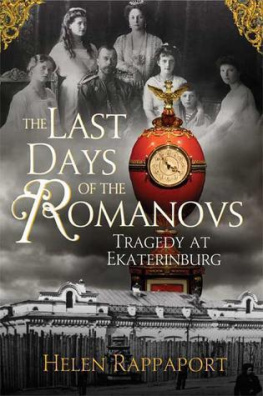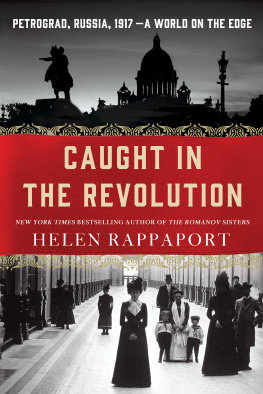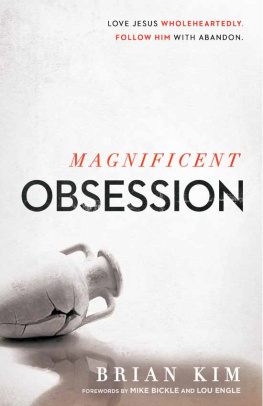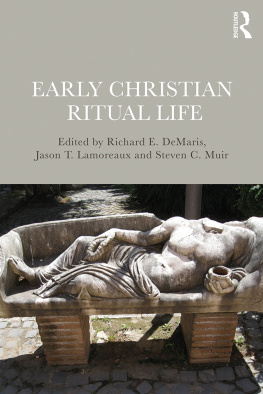Rappaport - Magnificent Obsession
Here you can read online Rappaport - Magnificent Obsession full text of the book (entire story) in english for free. Download pdf and epub, get meaning, cover and reviews about this ebook. year: 2011, publisher: Random House, genre: Non-fiction. Description of the work, (preface) as well as reviews are available. Best literature library LitArk.com created for fans of good reading and offers a wide selection of genres:
Romance novel
Science fiction
Adventure
Detective
Science
History
Home and family
Prose
Art
Politics
Computer
Non-fiction
Religion
Business
Children
Humor
Choose a favorite category and find really read worthwhile books. Enjoy immersion in the world of imagination, feel the emotions of the characters or learn something new for yourself, make an fascinating discovery.
- Book:Magnificent Obsession
- Author:
- Publisher:Random House
- Genre:
- Year:2011
- Rating:3 / 5
- Favourites:Add to favourites
- Your mark:
- 60
- 1
- 2
- 3
- 4
- 5
Magnificent Obsession: summary, description and annotation
We offer to read an annotation, description, summary or preface (depends on what the author of the book "Magnificent Obsession" wrote himself). If you haven't found the necessary information about the book — write in the comments, we will try to find it.
Rappaport: author's other books
Who wrote Magnificent Obsession? Find out the surname, the name of the author of the book and a list of all author's works by series.
Magnificent Obsession — read online for free the complete book (whole text) full work
Below is the text of the book, divided by pages. System saving the place of the last page read, allows you to conveniently read the book "Magnificent Obsession" online for free, without having to search again every time where you left off. Put a bookmark, and you can go to the page where you finished reading at any time.
Font size:
Interval:
Bookmark:
When Queen Victorias husband, Prince Albert, succumbed to typhoid fever in December 1861 the nation was paralysed with grief. He was only forty-two and official bulletins had, until the day before, given no cause for alarm.
Albert had in fact been in a decline for years worn out by overwork, stress and the exacting standards he set himself. His death was a catastrophe for Victoria, who not only adored her husband but had, through twenty-one years of marriage, utterly relied on him: as companion, father of their children, friend, confidant, wise counsellor and unofficial private secretary. There was not a single aspect of public business on which she had not deferred to his advice and greater wisdom. She would even consult him on what bonnet to wear.
For the 150th anniversary of Alberts death, Helen Rappaports fascinating history examines the profound impact his loss had on Britain. Cast adrift and alone, the Queen donned the widows weeds that she would wear for 40 years. Without Albert to guide and support her, with a feckless heir who had caused her nothing but anxiety, and a family of nine children to parent alone, she retreated into a state of pathological grief which nobody could penetrate and few understood. Her stubborn refusal to return to public life rapidly began to alienate even her closest family and friends and to bring a resurgence of republicanism. There was even talk of abdication.
Marshalling brilliant social detail about a court, a Parliament and a nation initially as bereft as their queen, but rapidly tiring of her cult of grief, Rappaport tracks Victorias single-handed mission to commemorate her husband in perpetuity, setting in train plans for the monuments in stone, on canvas and on paper that would properly memorialise him and set their visual stamp on the art and culture not just of her reign but of Britain today. Drawing widely on contemporary letters, diaries and memoirs, she brings new and compelling light to bear on the causes of Alberts death.
Most grippingly of all, Rappaport focuses on the enduring relationship between Victoria and Albert the magnificent obsession that not even death could sever.
Helen Rappaport is an historian and Russianist with a specialism in the Victorians and revolutionary Russia. Her books include Ekaterinburg: The Last Days of the Romanovs and No Place for Ladies: The Untold Story of Women in the Crimean War. She lives in Oxford. For more information, you can visit her website at www.helenrappaport.com
Also by Helen Rappaport
Beautiful For Ever
Conspirator: Lenin in Exile
Ekaterinburg
No Place for Ladies
Joseph Stalin
Queen Victoria
An Encyclopedia of Women Social Reformers
with William Horwood
Dark Hearts of Chicago
Victoria, Albert and the Death that
Changed the Monarchy
HELEN RAPPAPORT

For Charlie Viney
Peel cut down my income, Wellington refused me rank, the Royal Family cried out against the foreign interloper, the Whigs in office were inclined to concede me just as much space as I could stand upon. The Constitution is silent as to the Consort of the Queen and yet there he was, not to be done without.
Prince Albert, letter to Baron Stockmar, 24 January 1854
He conquered my heart; so that I could not choose but to love him there was an indescribable something about him an elevation, an humility, a power and simplicity, a thorough genuineness of character, a style and tone in his whole manner, opinions which made him to me my very ideal of a Christian Prince! What a Godfearing man he was! What a sense of duty he had.
Reverend Norman Macleod, 28 December 1861
For me, life came to an end on 14 December. My life was dependent on his, I had no thoughts except of him; my whole striving was to please him, to be less unworthy of him!
Queen Victoria, letter to King of Prussia, 4 February 1862
QUEEN VICTORIA IS one of the most written-about women in British if not world history. Her consort Prince Albert has also been the subject of several biographies, as well as studies of his contribution to the arts and British culture. This book is neither a biography of the Queen nor of Prince Albert. Instead it focuses on what is, I argue, a crucial period in her life, one that completely changed the course her reign took for the next forty years and had a profound impact on Britain: the lost ten years from Alberts death at the end of 1861 to the beginning of her re-emergence from deep mourning in 1872.
Much has been written about Queen Victorias later years as the gloomy, humourless, reclusive widow at Windsor, but virtually no attempt has been made to explore the nature of her grief or to describe the circumstances leading up to Prince Alberts death in December 1861 and its catastrophic impact on her. This book seeks to understand why the Queen reacted in the extreme way she did, by explaining her obsessive love for her husband and her total and utter reliance on him. The second half of the book considers Queen Victorias untiring memorialisation of her dead husband in biography, art and architecture at a time when criticism of her withdrawal from public life was mounting.
Prince Alberts death, funeral and the public response to it have been paid surprisingly little attention to date; recent accounts tend to stop abruptly at his deathbed or fast-forward to the Queens life thereafter. This book sets out to describe the effect that death had both on Prince Alberts contemporaries and on the nation at large. With this objective in mind, I have sought out unpublished, forgotten and neglected sources that comment on the Princes declining health, his death and funeral and the Queens reaction to it. In Britain we are blessed with a wealth of published letters, diaries and memoirs from the Victorian period, many of them by personalities who have long since been forgotten and consigned to obscurity, but which nevertheless contain valuable testimony on the impact of Prince Alberts death. It has been a pleasure to rediscover these now-neglected Victorian letter-writers and diarists, who have enlightened and enlivened my research and impressed me with their wonderfully perceptive comments about the Queen, Prince Albert and the true nature of their relationship.
A key resource in the writing of this book has been the Royal Archives in the Round Tower at Windsor Castle. I am indebted to their registrar, Pamela Clark, and her staff for making a range of fascinating material available to me during my research there, and for the permission of Her Majesty Queen Elizabeth II to quote from it, as well as use photographs and illustrations from the Royal Collection. My thanks also go to Sophie Gordon for her assistance in this latter respect.
From Germany, I was able to obtain copies of letters written at the time of Prince Alberts death by the Crown Prince of Prussia and Princess Alice of Great Britain. I am indebted to Christine Klssel at the Arkhiv der Hessischen Hausstiftung, Schloss Fasanerie, Eichenzell, for providing me with transcripts for those of the Crown Prince; and to Professor Eckhart G. Franz at the Staatsarchiv Darmstadt for making available digital images of the original letters by Princess Alice. Quotations from these letters are included with the gracious permission of Prince Donatus von Hessen. I am greatly indebted to Hannah Veale for translating both sets of letters from German, and in particular for her enormous patience in deciphering Princess Alices difficult handwriting.
Font size:
Interval:
Bookmark:
Similar books «Magnificent Obsession»
Look at similar books to Magnificent Obsession. We have selected literature similar in name and meaning in the hope of providing readers with more options to find new, interesting, not yet read works.
Discussion, reviews of the book Magnificent Obsession and just readers' own opinions. Leave your comments, write what you think about the work, its meaning or the main characters. Specify what exactly you liked and what you didn't like, and why you think so.

